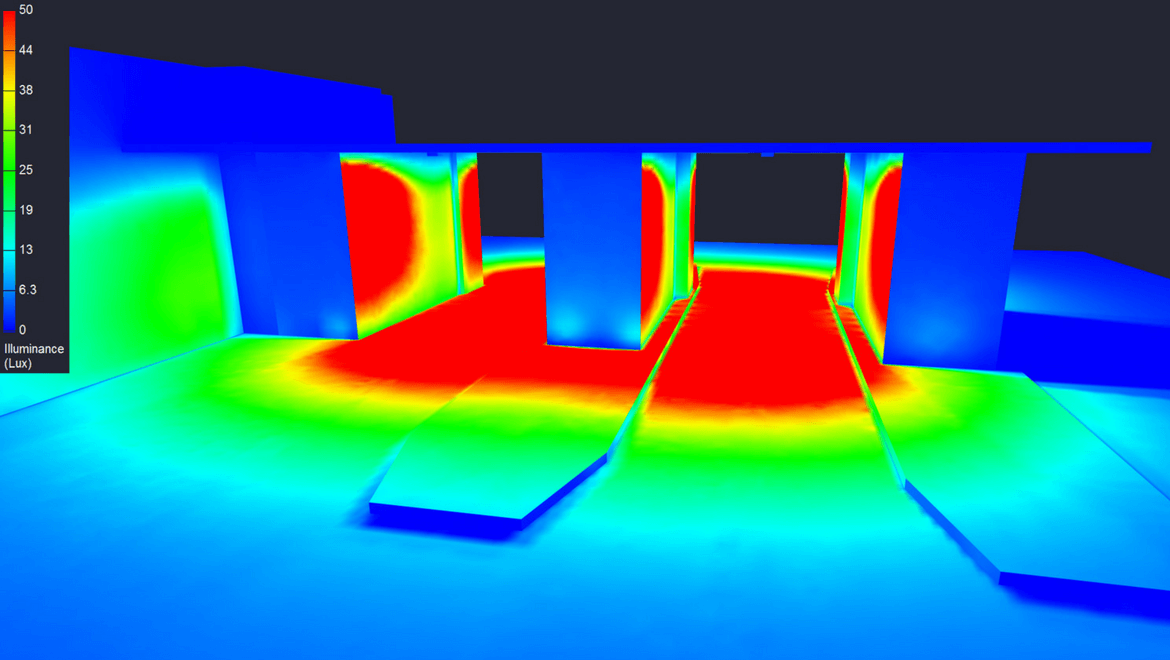It is becoming more and more important to factor in the photometric spectrum when designing lighting layouts. As a matter of fact, when a light source is not controlled, it can give off visible rays in all directions, which can result in needless, often harmful illumination. The science of photometry works to contain this light by specifying the intensity and the quality of light radiation, and perfecting new techniques to control it and aim it in the appropriate areas.
In essence, when working on a residential, commercial, industrial or institutional lighting project, a photometric analysis will allow you to plan your lighting layout more accurately to control your costs and increase your energy output.What is Photometry?
Photometry is the science of measuring visible light as perceived by the human eye. We use it mainly in the context of lighting technology whether in architectural, photographic, audiovisual, or other similar settings. The measuring unit of illuminance is the lux, or foot-candle; it indicates the amount of illumination a given surface unit receives. We use two devices to measure photometric data, namely the number of lumens produced by a light source:- The integrating sphere is used to measure all electrical features of a luminaire as well as the chromatic properties of a light source, particularly the luminous flux, or lumens
- The goniophotometer measures the spatial and angular distribution of a light source
The 5 Basic Metric Values
- Luminous Intensity (candela): It is the amount of light dispersed in a given direction. It is calculated in large part by guiding parts of the lighting flux such as reflectors. It is illustrated by the photometric curve.
- Luminous flux (lumen): It is the amount of light produced by a light source. As for light efficacy, it is the result of luminous flux divided by the amount of electrical energy consumed (lumen/watts). It reflects the profitability of a light source.
- Luminous existence (candela/ft²): It represents the spatial density of the luminous flux starting from a specific location.
- Luminous (candela/m²): Illuminance is the sole photometric magnitude that the human eye can determine. It represents the amount of luminous intensity (candela) that an object will reflect or produce per square meter.
- Illuminance (candela/m²): Illuminance is a measurement of the amount of luminosity that light projects onto a given surface. More specifically, it is the density of the luminous flux (lumens) on a surface. It tends to diminish as the distance between the surface and the light source increases (Inverse Square Law).
